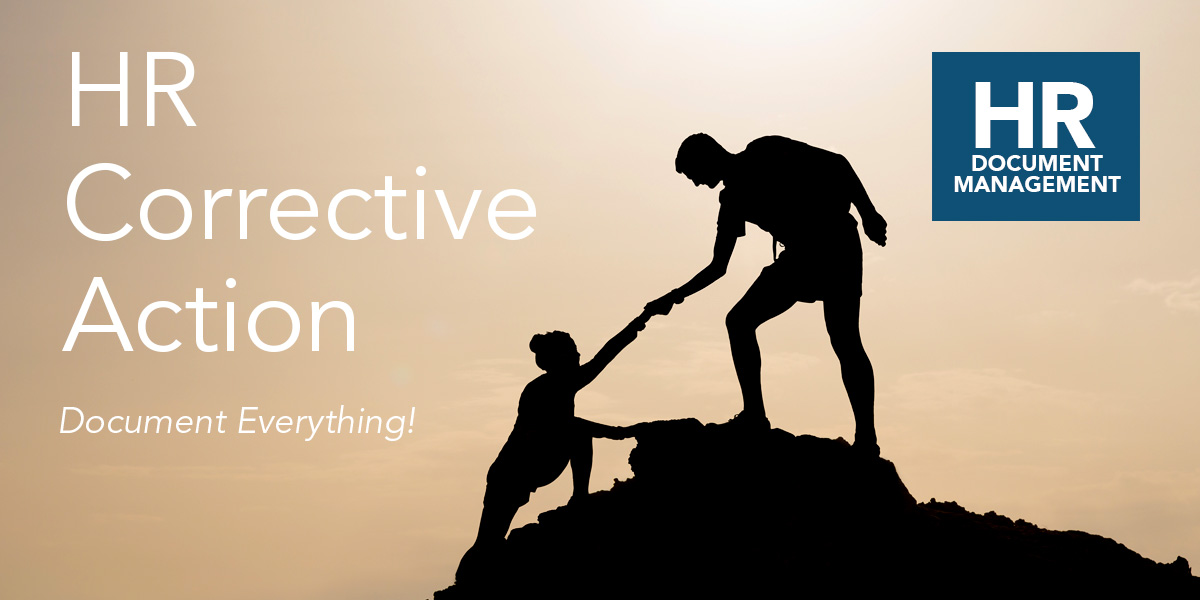From a document management standpoint, the final corrective action write-ups are just the very final stage of a very long, complete process.
At the recent HR Answers workshop on Corrective Action in HR (thank you Paul!), I was impressed with how much background was shared on the complete process.
In a tight labor market, culture in an organization is especially key. It is not surprising that you need to be proactive to make your company a better place to work and to keep the team in place once you’ve hired them. Some ideas that may not be so obvious are to assess EQ and work on active listening skills. Consider DiSC or Myers Briggs assessments. A couple of book recommendations made are Emotional Intelligence by Daniel Goleman and Emotional Intelligence 2.0 by Travis Bradberry, Jean Greaves & Patrick Lecioni. There are also many books available on active listening and effective communication. My personal favorite from this last year was Fierce Conversations by Susan Scott. When your team feels like they are heard and trust you, they are more likely to be the kind of addition to your staff you want and need.
Don’t leave it up to an annual review
Annual reviews are problematic. You can’t recall accurately what’s happened over the year, or even a couple months back. Performance Management requires ongoing communication. Coaching helps you give positive feedback for good behavior and to correct problematic issues before becoming insurmountable. It’s an important process to create dialogue, make sure expectations are clear, and to document progress and things to work on. This will give you a history to use for reviews and merit pay increases that are fair. And, Oregon law enforces that employees are always allowed to discuss pay, so transparency is your best bet.
Set clear expectations
In Oregon, we have an ‘at will’ state, but that doesn’t really matter. There still needs to be due process. Showing no discrimination in hiring and firing decisions is just as important. So, when it comes to the final decision to terminate, you do need a process and documentation to show consistency in behavior. Although, a probationary period at hiring can give you some flexibility for a decision to terminate when ‘it’s just not working out.’
When there is an issue to address, the first step is to make sure expectations are clear. Positive reinforcement of any movement in the right direction will let your employee feel noticed, valued, and more likely to give discretionary effort. Aubrey Daniels’ book ‘Bringing Out the Best in People’ is another recommended read.
When coaching isn’t working and changes are needed in behavior or performance, they need to be documented with specific plan and repercussions clearly defined. Review all coaching that’s previously occurred. Define clearly what has been tried to date and the results, or lack of. It’s vital that HR be involved at least by this step in the process. It’s best if managers bring in HR early in any process that may be heading toward termination to make sure proper steps are followed.
SHRM is a resource
SHRM has an article with good points on what to consider https://www.shrm.org/ResourcesAndTools/hr-topics/employee-relations/Pages/How-to-Decide-Whether-to-Fire-Someone.aspx?. Part 1 of due process is forewarning. ‘If _____, then discipline up to and including termination.’ (not If____, then termination’). Once you fill out a formal corrective action you can’t discipline again until the end of time frame listed. Give them a reasonable amount of time to show improvement. If they show any improvement, celebrate and continue the process until they have achieved the desired result. If not, then the next step may be a last chance agreement.
Document everything
These steps need to be documented in your employee handbook and followed consistently. Have a single point of contact for terminations. The CEO or Division Manager is recommended. Someone has final say to discipline, and always have two managers involved for safety and as witness. Again, HR should be involved before disciplinary action to check and confirm no problem. It was also suggested that before the final decision to terminate, have your attorney review to consider risks. Even with gross misconduct (there are certainly times it makes sense to one-and-done https://www.shrm.org/resourcesandtools/legal-and-compliance/employment-law/pages/when-to-skip-progressive-discipline.aspx?), it was recommended to send someone home versus termination on the spot.
More courses and workshops from HR Answers listed here: http://hranswers.com/events/




